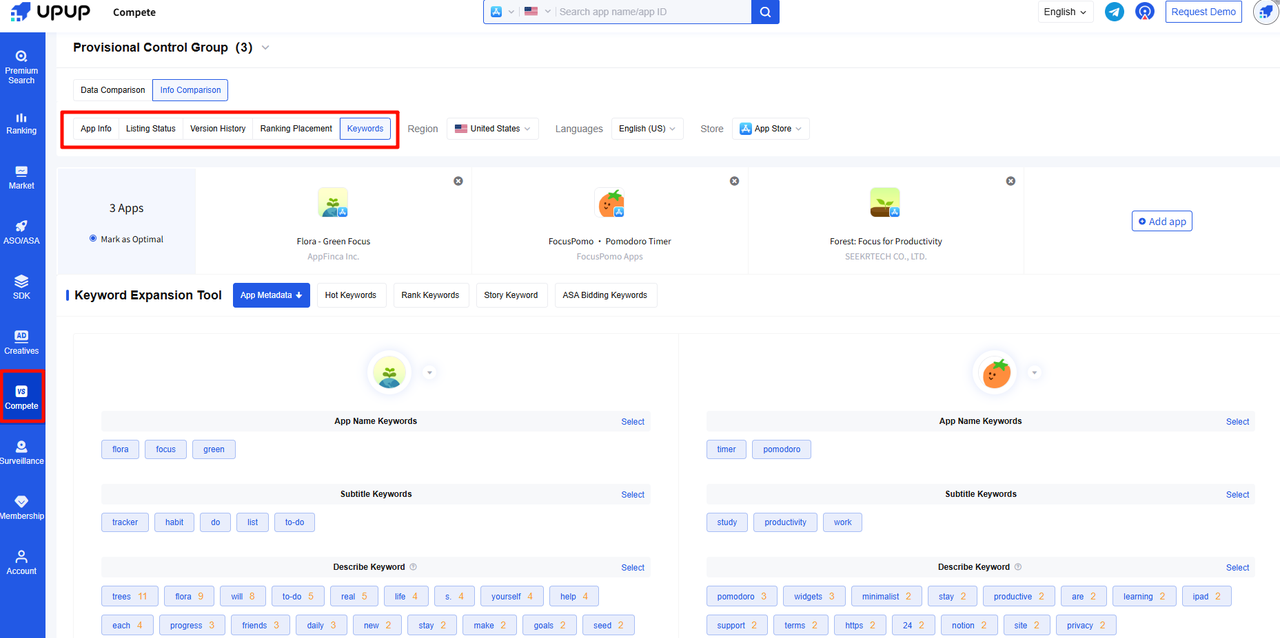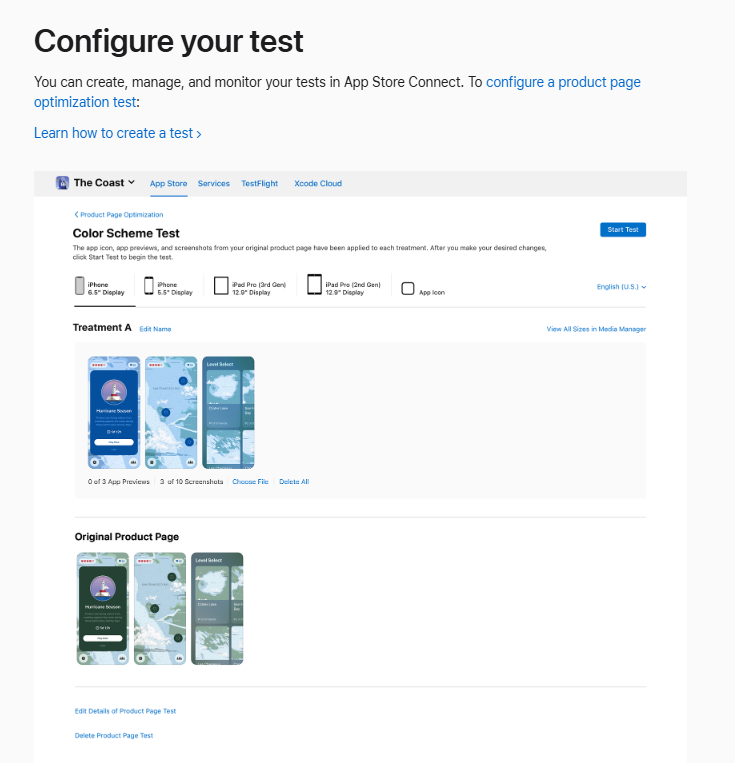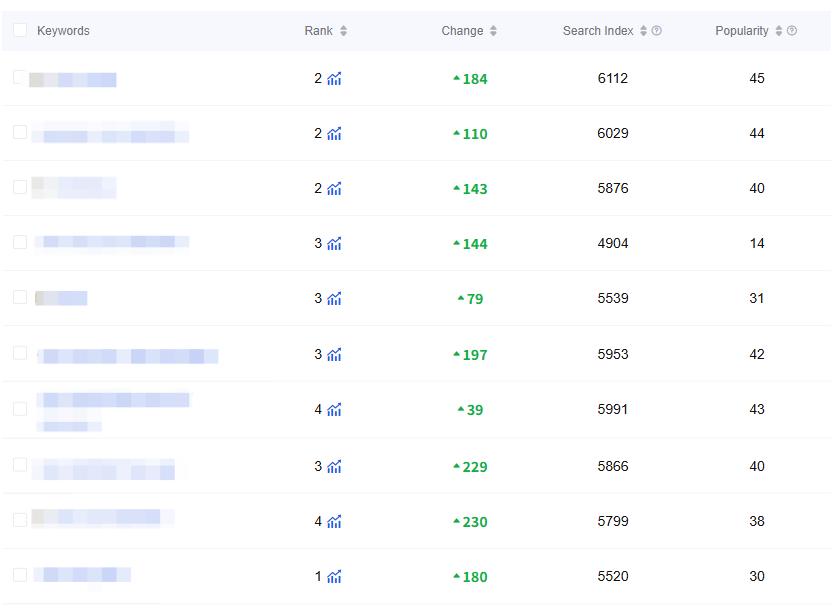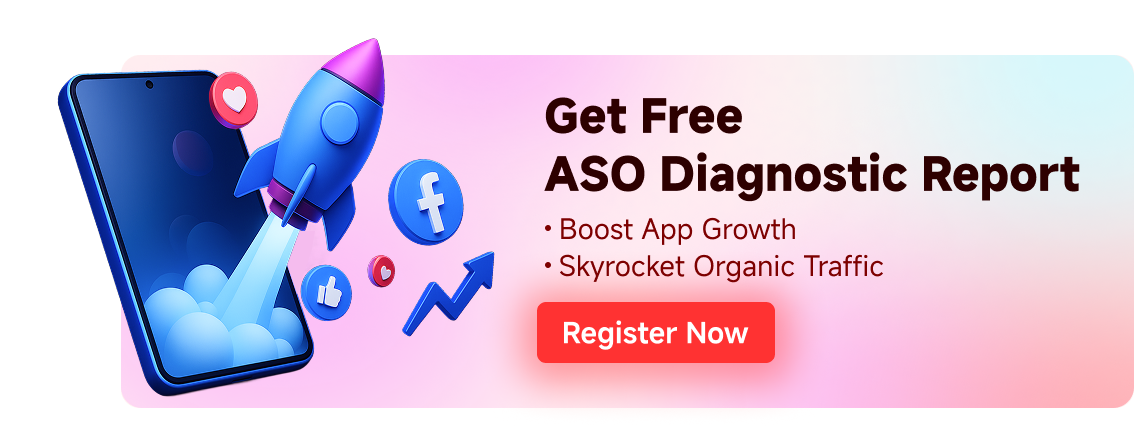
Loading...
Free consultation with ASO specialists
Doing ASO for the first time or have no idea how to carry out targeted optimization of your app?
We offer one-on-one customized services provided by app marketing specialists
Competitor ASO Analysis: The Secret Weapon of Conversion Rate Optimization Experts
2025-08-28
Introduction: ASO and the Importance of Conversion Rates
In the context of increasingly fierce competition in the mobile app market, App Store Optimization (ASO) has become a core strategy for enhancing app visibility and downloads. ASO improves an app's ranking in search results and charts by optimizing its metadata and store page content, thereby attracting more users to visit and download it. Conversion rate is a key metric for measuring ASO effectiveness, reflecting the ability of the store page to convert visitors into actual download users, directly demonstrating the page's attractiveness and persuasiveness.
According to industry data, the average conversion rate of the US App Store is about 25%, and Google Play is about 27.3%. That is, only about 1/4 users finally download for every 100 visits to the details page. Even if the conversion rate increases by only a few percentage points, it can still bring significant growth in downloads on the basis of large traffic. Therefore, how to effectively improve the conversion rate has become a key concern for developers and market operations.
Against this background, competitor ASO analysis has become an important tool for conversion rate optimization. By systematically studying competitors' store page strategies, effective optimization methods can be identified and common pitfalls discovered, thus drawing on successful experiences and avoiding potential problems. Taking "Competitor ASO Analysis" as the core, this article explores how to optimize conversion rates by benchmarking competition, and provides practical strategies and case support.
How to improve conversion rate through ASO analysis of competitors
Competitor ASO analysis can help improve conversion rate by systematically evaluating competitors' store pages and extracting strategies for reference. The specific functions include:
-
Identify elements that lead to efficient conversion: Analyze metadata and visual content of competitors' titles, icons, screenshots, videos, etc., identify key factors that attract users to click and download, such as effective keyword layout or prominent presentation of core selling points, and provide a basis for optimizing your own page.
-
Insight into real user preferences: By analyzing the Ratings and Reviews of competitors, you can grasp the functions, pain points and expectations that target users are concerned about. Based on this, highlight the selling points that users care more about, improve page persuasiveness and conversion possibility.
-
Avoid common mistakes: observe the inefficient practices of competitors, such as keyword stuffing, unclear descriptions or low-quality materials, to avoid taking a wrong turn in your own optimization and reduce testing costs.
-
Maintain competitive advantage in the market: Continuously track competitors' ASO strategy iterations (such as feature updates, activity adjustments, etc.), respond to changes in a timely manner, and maintain page vitality and competitiveness.
Competitor ASO analysis is like "using stones to attack jade", which quickly verifies the optimization direction by leveraging competitors' practical feedback. As industry opinions show, "only by understanding the success factors of competitors can we better capture market gaps and trends". The following will elaborate on specific analysis methods and practical cases.
Competitor ASO Analysis Practical Guide
-
Define the scope of competitors
First, define the core competitors, including direct competitors (similar functions and consistent target users) and indirect competitors (solve the same demand but different forms). For example: The direct competitors of food delivery apps are other food delivery apps, and the indirect competitors are recipe apps or dine-in apps. You can filter related competitors through app store category rankings, search results, and ASO tools (such as UPUP).
-
Collecting Competitor Metadata
For each competitor, collect all metadata and content from the app store, including: app name, subtitle (App Store)/short description (Google Play), detailed description, keywords (if available), icon, screenshots, promotional videos, ratings, and reviews. Data can be collected manually or through ASO tools in batches, laying the foundation for subsequent analysis.

-
Decompose Keyword Strategy
Keywords are the core of ASO. It is necessary to analyze and clarify the keyword selection of competitors and the way they are implanted in the title, subtitle/short description, and detailed description. With the help of keyword tools, we can view the high-ranking keywords of competitors, their coverage breadth and density, and focus on keywords with high search volume and good competitor rankings (evaluate the feasibility of incorporating them into our own word library), while also mining long-tail keywords that competitors have not covered to fill market gaps.
-
Evaluate the visual and copy conversion power
-
Visual elements (icons, screenshots, videos) and copy (title, description) directly influence user decision-making and need to be analyzed in detail:
-
Visual: Icon visibility and positioning match, screenshots of key functions / advantages are clear, video highlights convey effect;
-
Copywriting: Core keywords in the title, concise strength, highlighting of user benefits and call to action in the description. For example: Some competitors increase conversion rates by adding screenshots with "before and after comparison" and "user review tags", which can be tested for reference.
-
Deeply explore the value of user ratings and reviews
User ratings are the core feedback window for application quality and demand. Competitor rating data (average star rating, total number of ratings) should be collected, recent user reviews should be thoroughly analyzed, and advantages widely recognized by users should be extracted (which can be referenced to highlight your own features) as well as frequently complained issues (such as bugs or pricing disputes, which need to be avoided and solutions for pain points highlighted in your own description).
-
Benchmarking Downloads and Ranking Trends
Obtain estimated download volumes and ranking fluctuation trends of competitors through third-party data platforms to evaluate the effectiveness of their ASO strategies. If competitors significantly improve their rankings or download volumes in a short period, trace back to concurrent metadata adjustments (such as keyword updates), feature iterations (enhanced points in descriptions), and operational activities (such as in-app promotions) to extract reusable strategies.

-
Output the conclusion and develop an optimization plan
Summarize the analysis results of each dimension, extract core value information (such as "high-efficiency keyword list of competitors", "high-quality screenshot design case", "core user demand point"), and formulate ASO optimization plan based on this, covering keyword adjustment, title/description optimization, visual material iteration, review guidance and other directions. After the optimization is implemented, continuously monitor core indicators (search ranking, page visits, conversion rate, downloads), evaluate the effect and iterate and adjust.
Special attention is required: Competitor ASO analysis is not a one-time job. The application market environment, user preferences and competitor strategies are all changing dynamically. Regular reviews can ensure that our own ASO strategy always meets market demand.
Practical Strategies for Conversion Rate Optimization
After understanding the methods of competitor ASO analysis, we also need to master specific conversion rate optimization strategies and put the analysis into practice. Here are some proven practical tips for improving app store page conversion rates.
-
Optimize Title and Keywords
The title should be concise and include core keywords, highlighting the application's core value or unique selling point. The subtitle/short description can supplement secondary keywords. Avoid piling up, keep the sentence natural. Extract an efficient keyword combination through competitor analysis to optimize your own title and keyword layout.
-
Write high-conversion descriptions
The detailed description of the application is an important step in persuading users to download it. In the description, you should clearly communicate what problems the application can solve for users and what benefits it can bring. Use an inverted pyramid structure: emphasize the core value at the beginning, list functions and user benefits in the middle, and add call-to-action language at the end. Appropriately and naturally repeat keywords to improve search relevance. Refer to well-written descriptions of competing products, learn their tone and structure, but be careful to maintain your own style and authenticity.
-
Improve visual material quality
Visual elements have a direct and significant impact on conversion rates. Screenshots should be clear and attractive, accompanied by concise copy highlighting key features or user benefits. Videos should be kept between 15-30 seconds, dynamically showcasing core scenarios and functions, with the beginning especially designed to grab attention. By analyzing competitors' screenshots and videos, we can understand which presentation formats are more popular, thereby improving our own creative materials.
-
Make the most of Ratings and Reviews
High ratings and positive reviews significantly enhance trust. Actively guide users to rate (for example, by appropriately prompting for ratings within the app, but be careful not to disturb users), and promptly respond to feedback to demonstrate the developer's seriousness. Analyze the strengths of high-rated apps among competitors, and optimize your own user experience and review management strategy.
-
PromoteA/B Testing
Design different versions of elements such as titles, screenshots, and descriptions for testing, adjusting only one variable each time. For example, you can test different wording of titles, different combinations of screenshots, or different structures of descriptions. By comparing small-scale deliveries, observe which version has a higher download conversion rate, and then determine the better option. Continuously iterate tests to continuously optimize page conversion effects.

-
Implementing localisation optimization
Customize metadata and assets, including keywords, descriptions, and screenshots, for different regional markets. Through competitor analysis, learn how apps that perform well in a specific market localize their metadata - which local keywords do they use? How do screenshots and descriptions adapt to local culture? Based on this, customize the app name, keywords, descriptions, and screenshots for each target market. This will make local users feel more familiar and relevant, thus improving click-through rates and conversion rates.
The above strategies need to be flexibly applied in combination with the characteristics of the application itself. For example, game applications may emphasize the visual impact of screenshots and videos, while tool applications may need to highlight functional practicality and user reviews. By learning from the successful experiences of competitors and continuously testing and adjusting, we can gradually create an app store page with high conversion rates.
Want to quickly improve keyword coverage and rankings? Our Keyword Installation Service By real user search and download, the ranking of core words and natural traffic can be efficiently improved. Click to learn more details to help apps quickly gain traffic!

Case Study: Learning from Competitor Analysis
To better understand how competitive ASO analysis can improve conversion rates, we will share two actual cases below.
-
Case 1
A fitness app launched by a startup team had slow growth in the early stage. Through systematic analysis of competitors' ASO strategies, the number of downloads was significantly increased. The team found that top-ranking competitors generally used specific long-tail keywords such as "fitness plan" and "Pamela slimming fitness weight loss exercise", rather than broad vocabulary; meanwhile, they emphasized usability, action demonstration, and user effect comparison in screenshots and descriptions.
Based on these findings, the team implemented the following optimizations:
-
Replace keywords with more targeted long-tail keywords, and highlight differentiated selling points such as "ancient fitness" and "fitness simulator" in the title and description;
-
Redesign screenshots, add user comparison before and after use and clear guidance;
-
Refer to the competitor's strategy and actively guide users to give positive ratings.
After optimization, the average ratings of this app increased from 3.7 to 4.5 within three months, the number of reviews increased by 150%, and the monthly downloads increased by 200%. This case study shows that clearly defining keywords and content optimization directions through competitor analysis can effectively improve conversion rates and download performance.
-
Case 2
An efficiency tool app achieved a reversal of competitors through systematic A/B testing due to its store page conversion rate lower than the industry average. The team first analyzed high-conversion competitors and found that their screenshots generally adopted high-contrast bright backgrounds and prominent feature titles. Therefore, they designed two sets of screenshots: one retained the original style, while the other adopted the competitor's style with a bright blue background and larger titles.
The test results showed that the new style screenshots increased the conversion rate by about 15%. The team further conducted an A/B test on the description structure, putting the core advantages in front and expressing them in a more concise and powerful language, which again improved the conversion rate. Through continuous iteration testing and optimization, the conversion rate of this application page eventually surpassed that of major competitors, and downloads also grew steadily.
This case shows that competitive analysis provides optimization direction for A/B testing, and data verification ensures the effectiveness of the strategy. The combination of the two can significantly improve conversion performance and achieve a comeback for the latercomers.
Conclusion: Continuous optimization, surpassing competition
Competitor ASO analysis is a key link in mobile application operation and growth, which enables us to learn from competitors' successful experiences, identify potential pitfalls, efficiently optimize store pages, and thus effectively improve conversion rates and download volumes. This article systematically elaborates on the importance of competitor analysis, execution methods, and conversion rate optimization strategies, and verifies its effectiveness through actual cases.
It should be emphasized that ASO and conversion rate optimization are continuous, iterative, and data-driven processes. The market environment, user preferences, and search behaviors are always changing, so today's effective strategies may need to be adjusted tomorrow. Therefore, competitive analysis should be treated as a routine operational activity, continuously tracking competitive dynamics, monitoring core metrics, and iteratively optimizing pages based on feedback, in order to maintain competitiveness in a fierce market.
If you want the system to improve the ASO performance and conversion efficiency of your application, please feel free to learn about our professional ASO service. We provide keyword coverage analysis,Ranking Optimization, metadata iteration and download growth strategy, help your application stand out in the store. Take action now to turn competitors' advantages into your growth momentum.
Don't know where to start optimizing? Get a free metadata diagnosis solution now. Our ASO experts will provide you with a detailed analysis report and feasible suggestions, helping you accurately improve page conversion rates and achieve breakthrough downloads!
Related recommendations

